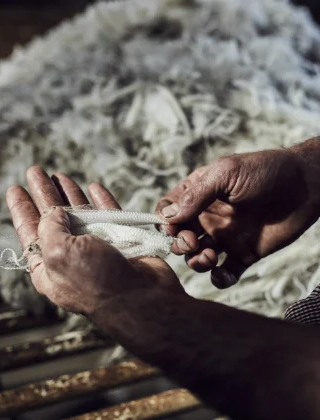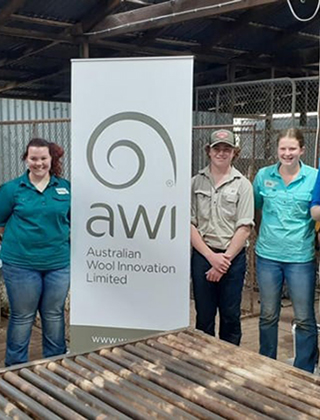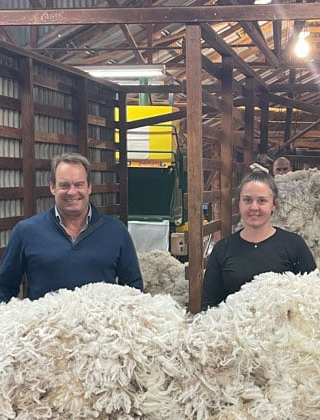Shearer and wool handler training courses
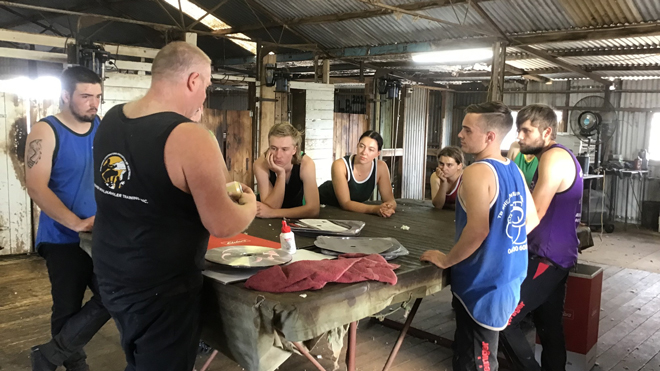
AWI funds shearing and wool handling training courses to attract and retain new entrants into the wool harvesting industry, build the capacity and longevity of existing staff, and increase returns to woolgrowers through improved clip preparation practices.
Participants learning how to maintain handpieces at a novice shearing course at Tungamah, Victoria.
AWI funds shearing and wool handling training courses to attract and retain new entrants into the wool harvesting industry, build the capacity and longevity of existing staff, and increase returns to woolgrowers through improved clip preparation practices.
AWI regularly funds and supports hands-on practical in-shed training for shearers and wool handlers to attract and retain new workers, as well as increase workers’ productivity, skills and professionalism.
There has been a concerted effort to run extra novice and improver training, funded by AWI and several state governments. In Victoria and South Australia, the training is provided by the Shearing Contractors Association of Australia Shearer Woolhandler Training Inc (SCAA SWTI).
All the training aligns with nationally recognised qualifications and are designed to meet industry standards and needs.
AWI thanks all the woolgrowers who provide their facilities and sheep, and all the other organisations and individuals that lend their time and resources to help run this training.
More information: To arrange training in your state, email craig.french@wool.com. Keep an eye on the Facebook channels of @australianwoolinnovation and @shearerwoolhandlertraining (Vic and SA) for the latest updates.
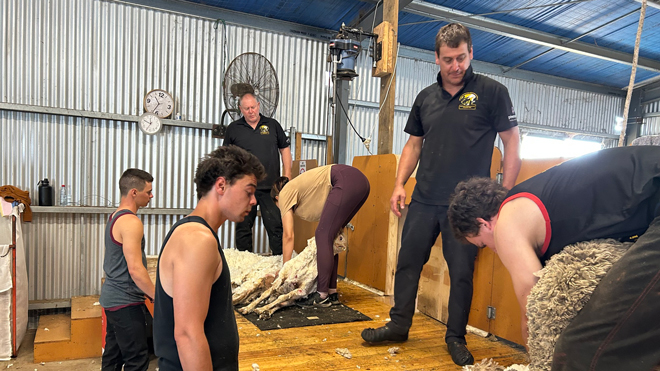
Participants learning best practice shearing technique on a five-day novice course at Balmoral, Victoria.
Novice training courses help to attract the next generation
AWI-funded novice shearing and wool handling training courses provide participants with a solid introduction to the wool harvesting industry and create a pathway for them to obtain ongoing employment. Once a person has completed a novice course, they may be employable as a ‘learner shearer’ in a commercial wool harvesting operation.
The novice courses are suitable for participants ranging from wool handlers looking to learn new skills in shearing and farm workers wanting to gain experience in shearing and crutching, to those new to the shearing industry. Priority is given to those working in the industry who have an opportunity for a full time stand as a learner shearer. The courses are fully funded by AWI and are offered at no cost to eligible participants.
The live-in courses last for five days and are very practical, shed-based courses taught by leading industry trainers.
Craig French, AWI National Manager, Wool Harvesting Training & Careers Development, says the training aims to make participants job-ready for shed work, thereby helping build the wool harvesting workforce.
“It is a very hands-on course that covers topics like shearing gear, set-up and safety, handling sheep, shearing technique, wool handling, the significance of a good work ethic and camaraderie, and the importance of a quality end-product,” he said.
“Throughout the course, participants also get taught all aspects of wool handling, wool pressing and clip preparation to prepare them to go straight into the industry as a wool handler if not a ‘learner shearer’.
“But the course is not only about shearing and wool handling, it is also about providing youngsters with life skills, such as the benefits of health and nutrition, personal development and importantly a career pathway.”
What do participants learn on the novice course?
Health and safety: First off, the participants are taught about the importance of health and safety in the workplace to ensure that they and other team members are not put in danger. This relates to the set-up of the shearing shed, the shearing equipment, and the work environment and practices.
Animal welfare: Participants are taught about the importance of animal welfare and the high expectations that are expected about the handling and treatment of sheep.
Crutching: After an introduction to the set-up of the shearing handpiece, participants are shown how to crutch. This includes the catch and drag, the correct positioning of the sheep, as well as the best footwork, grip and blow entry, with special attention given to vulnerable areas of the sheep.
Shearing: Participants progress to shearing, with them progressively shown how to shear individual sections of the sheep, such as the belly and the transition from the crutch to the back leg, through to the long blows, and the neck and front shoulder. Once competent at shearing the individual sections, the participants progress to shearing the full sheep.
Tips and tricks: The experienced trainers pass on tips and tricks, such as transition footwork, and the rhythm and flow of shearing. The aim for the participant upon completion of the course is to be able to shear a minimum of 40 adult Merino sheep or 50 adult crossbred sheep per day to an acceptable industry standard.
Handpiece maintenance: Participants are given a thorough understanding of the workings of the handpiece and the downtube for machine shearing, including how to sharpen the combs and cutters, and potential gear problems they might encounter, such as bent or chipped teeth, and how to rectify them.
Wool handling: Wool handling and clip preparation are important aspects of the course. Participants are taught how to identify and sort the different parts of the fleece.
Wool pressing: Participants receive a wool pressing demonstration during which they learn how to cap a bale, brand a bale, as well as replace the wool pack.
Life skills: A very important aspect of the course is the provision of life skills to the participants, who often are not long out of high school. The benefits of nutrition and a heathy lifestyle are discussed, along with frank discussion on the effects of drugs and alcohol. Financial and budgeting skills are also taught. There is an emphasis on what it means to work effectively in the wool industry, with the participants informed about improver courses and career pathways in the industry.
This article appeared in the June 2023 edition of AWI’s Beyond the Bale magazine. Reproduction of the article is encouraged.






